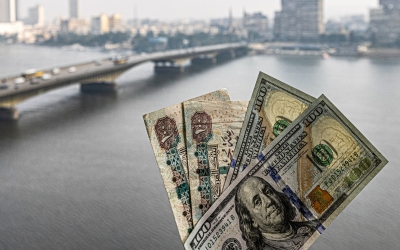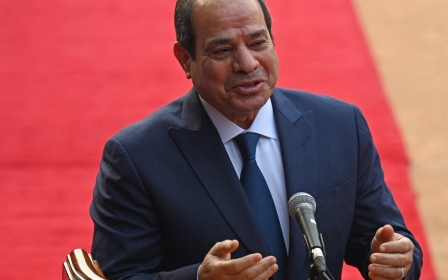How Europe is profiting at the expense of Egypt's poor

The European Union this month announced a massive funding package worth 7.4 billion euros ($8bn) to support Egypt’s struggling economy. It includes five billion euros in loans, 1.8 billion in investments, and 600 million in grants, a third of which is designated for managing “migratory flows”.
One billion euros in loans will be made available this year as emergency funding, with the rest awaiting approval from the European Parliament. The funding package represents an upgrade in relations between the EU and Egypt to a “strategic partnership”, facilitating deeper cooperation.
The move, which has been heavily criticised by human rights groups, is part of a strategic alliance between Europe and the Sisi regime, which has seen European corporations and states benefit greatly from the regime’s model of militarised state capitalism and excessive spending on arms.
Indeed, contrary to conventional wisdom, the logic at play is much more sinister than curbing migration or stabilising the southern Mediterranean. Although the issue of migration is an important factor, it is far from the decisive one.
One needs only to look at the role that European corporations have played in the Egyptian regime’s policy of debt-fuelled mega-projects to understand the dynamics at play.
New MEE newsletter: Jerusalem Dispatch
Sign up to get the latest insights and analysis on Israel-Palestine, alongside Turkey Unpacked and other MEE newsletters
The most notable example is the German firm Siemens, which has been a major benefactor of the Egyptian spending spree, starting two years after the coup with a six-billion-euro ($6.5bn) deal to build power plants in Egypt. The project was largely financed through debt, with the government reportedly obtaining 4.1 billion euros of bank loans.
By 2023, less than a decade after the start of construction, Egypt was experiencing regular power cuts, amid a suffocating debt crisis and a reduction in the country’s natural gas production.
Transferring wealth
The costly construction of power stations, however, has been dwarfed by another mega-project: the world’s sixth-largest high-speed rail system, connecting the Red Sea and the Mediterranean, with a price tag of $23bn. The contract with Siemens Mobility was signed in May 2022, as the debt crisis was starting to make itself felt - but this did not deter the regime from its folly.
France also pledged to invest 3.8 billion euros ($4.1bn) in Egypt between 2021 and 2025, including 1.8 billion euros in loans, with Finance Minister Bruno Le Maire calling Egypt “a strategic economic partner of France” and “the top country in terms of loans from the Treasury”.
The massive debts extend to the Egyptian regime's excessive spending on arms, a contributor to the squandering of public funds
This all comes as Egypt’s poverty rate has increased significantly due to the pound's devaluation, from around 30 percent in 2019, and public resources, financed through a regressive taxation system, are used to meet the country’s growing debt obligations. This is effectively transferring wealth from the Egyptian poor and middle classes to European corporations and banks, as the military continues to spread its tentacles in the economy, using mega-projects as a spearhead.
There are also direct European investments, specifically in the oil and gas sector. Italy’s Eni, a partially state-owned energy company, invested $13bn in Egypt between 2015 and 2019. In 2023, Eni pledge to invest an additional $7.7bn over the next four years.
The massive debts extend to the Egyptian regime’s excessive spending on arms, a contributor to the squandering of public funds and the evolution of the debt crisis. The most notable example is the purchase of Rafale fighter jets from France in two separate deals. The first deal, worth $5.9bn, was concluded in 2015, and the second, worth $4.5bn, in 2021. In both deals, financing loans were necessary.
In 2019-20, the regime’s spending on arms reached an astounding $16bn, including deals with Germany and Italy. Based on the available, rather limited information, loans played a significant role in securing these deals, adding to the regime’s growing debt and draining hard currency reserves.
Deadly alliance
The arms deals were not limited to hardware, but also included French mass surveillance systems, which can be used to repress dissent. The alliance between the regime and the French state runs so deep that French intelligence was directly involved in air strikes in the Western Desert in recent years against “terrorist” targets, with evidence emerging later that civilian smugglers were targeted, also revealing continued French involvement.
The latest European support package is thus consistent with a long-standing European policy of supporting the Egyptian regime through loans, arms deals and investments that are not directly connected to the question of migrants.
Indeed, while the threat of increased migration to Europe has risen with the civil war in Sudan, only 200 million euros ($217m) of the recent EU funding package was earmarked for curbing migration. One needs only to look at the available data to understand that the threat of migration into Europe from Egypt is not an immediate concern.
As of August 2022, there were an estimated nine million migrants in Egypt, 60 percent of whom had been living in the country for more than 10 years, with a positive impact on the labour market and economy. Around 30,000 Syrian investors have injected an estimated $1bn into the Egyptian economy.
Only 15 percent of the migrants in Egypt are classified as vulnerable and in need of special assistance. As of January 2024, Egypt was hosting 480,000 registered refugees and asylum-seekers, with the largest group comprising people who had fled the war in Sudan.
In essence, the EU and major member states have thrown their lot in with one of the most brutal and repressive dictatorships in the Middle East, standing firmly against the democratic aspirations of Egyptians. This policy has garnered mass profits for European corporations and states, at the expense of the Egyptian poor and middle classes.
This will only lead to long-term instability and the emergence of the European bogeyman: the Arab migrant.
The views expressed in this article belong to the author and do not necessarily reflect the editorial policy of Middle East Eye.
This article is available in French on Middle East Eye French edition.
Middle East Eye delivers independent and unrivalled coverage and analysis of the Middle East, North Africa and beyond. To learn more about republishing this content and the associated fees, please fill out this form. More about MEE can be found here.






